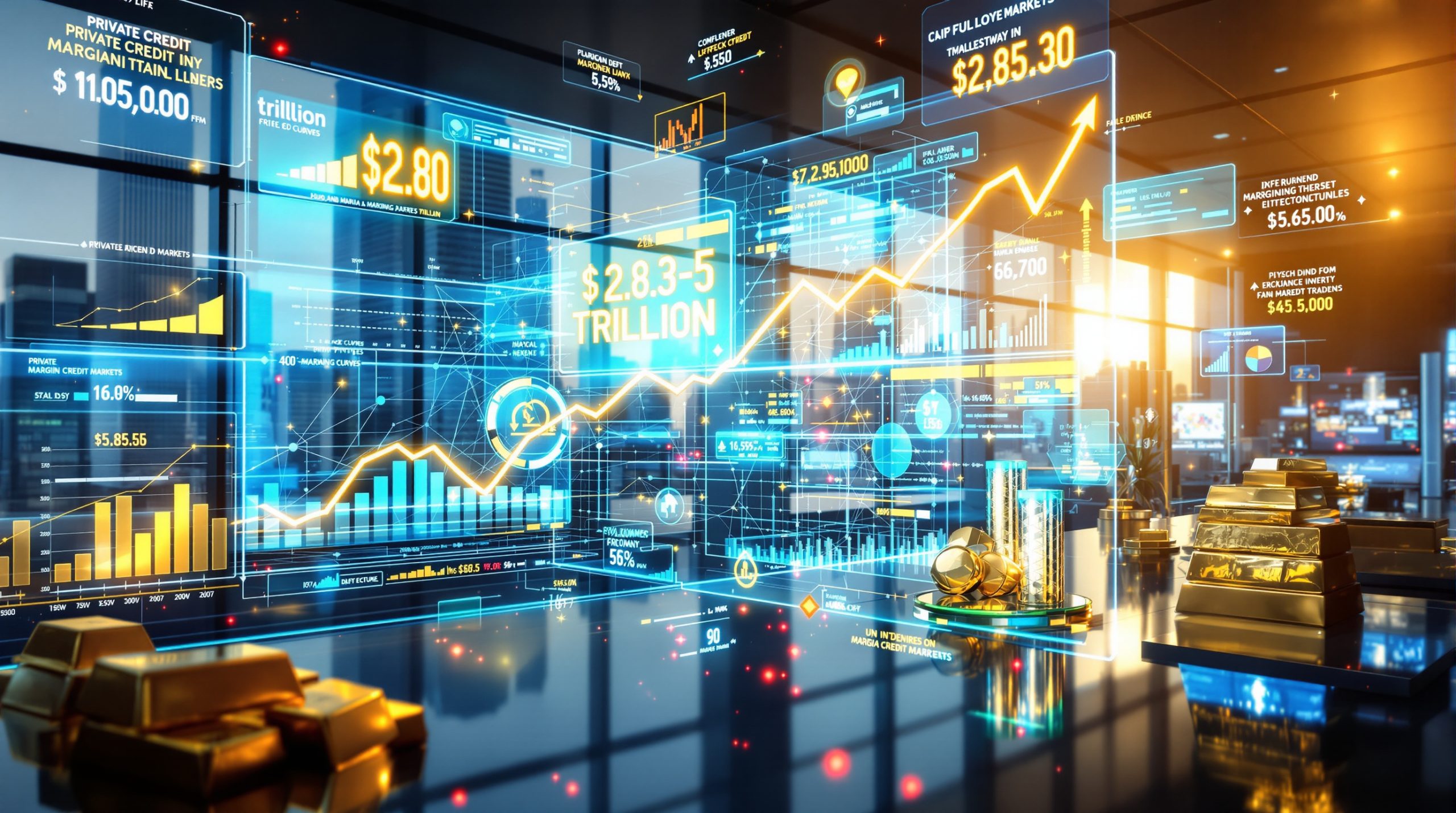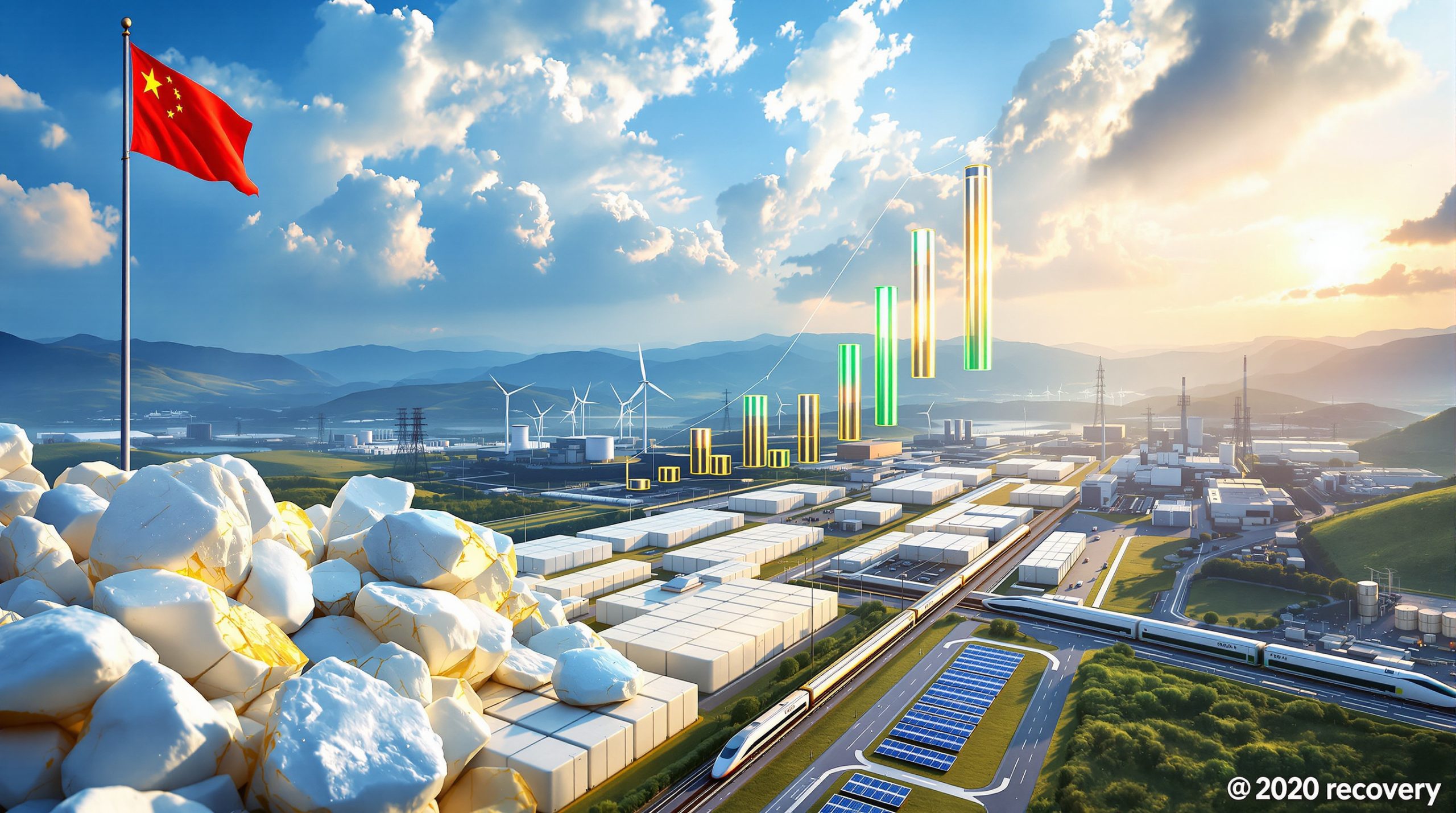The Silver Squeeze: Understanding Global Demand and Supply Dynamics
Silver, often overshadowed by gold in investment conversations, has emerged as a critical industrial metal facing unprecedented demand pressures. With applications spanning renewable energy, electronics, automotive technology, and traditional sectors, silver's market dynamics deserve careful analysis as silver supply deficits intensify.
How Is Industrial Demand Reshaping the Silver Market?
The silver market has undergone a fundamental transformation in recent decades, evolving from primarily monetary and decorative uses to becoming an essential industrial commodity. This shift has created new pressure points throughout the supply chain.
The Transformation of Silver's Industrial Profile
Industrial applications now represent approximately half of total silver consumption, a dramatic increase from historical norms. This fundamental shift reflects silver's irreplaceable role in modern technology, where its exceptional electrical conductivity, thermal properties, and antimicrobial characteristics make it essential in high-performance applications.
The metal's physical properties—particularly its unmatched electrical conductivity—position it as irreplaceable in precision electronics and green technologies where efficiency is paramount. This creates inelastic silver demand that persists even through price fluctuations.
As industrial consumption accelerates faster than mining output can respond, supply constraints are becoming increasingly evident. Unlike other industrial metals, silver cannot be quickly scaled up through mining expansions, creating a structural imbalance.
Critical Green Energy Applications Driving Growth
Solar energy stands at the forefront of silver demand growth. Photovoltaic manufacturing now consumes a significant portion of global silver supply, with projections indicating further increases as renewable energy deployments accelerate globally.
Each solar panel contains between 15-20 grams of silver, primarily in the form of silver paste used to create conductive pathways that efficiently capture and transmit electrons. This silver content is crucial for maintaining panel efficiency and longevity.
Despite ongoing efforts to reduce silver loading per panel (known as "thrifting"), the sheer scale of planned solar capacity expansion means total silver demand from this sector continues to grow. Manufacturers have found that reducing silver content below certain thresholds results in unacceptable performance degradation, creating a floor for silver consumption per unit.
What's Causing the Persistent Silver Supply Deficit?
The silver market has experienced a notable supply-demand imbalance in recent years that shows signs of becoming structural rather than cyclical. Understanding the fundamentals of this deficit provides important context for analyzing silver market trends.
The Structural Supply-Demand Imbalance
Market analysts have documented consistent silver deficits, with demand exceeding primary supply by substantial margins. This persistent gap has required drawing down above-ground inventories and recycling streams to meet consumption needs.
The shortfall appears to be growing, with cumulative deficits expanding as industrial demand accelerates. While specific figures require verification from industry sources, the trend toward widening deficits appears well-established across multiple reporting organizations.
This ongoing imbalance has historically been partially offset by investor selling during price increases, but evidence suggests available inventories for such releases may be declining. Commercial users have responded by securing longer-term supply contracts and building strategic inventories when possible.
Mining Limitations and Production Challenges
Silver's production profile creates unique market challenges. Most silver comes as a byproduct of other mining operations, primarily copper, lead, zinc, and gold extraction. This means production decisions are often driven by the economics of these primary metals rather than silver prices.
Primary silver mines—operations where silver is the main revenue source—represent only a minority of global production. These dedicated silver producers have greater sensitivity to silver pricing strategies but lack the scale to offset broader market deficits alone.
The byproduct nature of most silver production creates a structural supply constraint since output cannot rapidly scale in response to silver demand or price signals. If copper prices decline, for example, reduced copper mining can restrict silver supply regardless of strong silver prices.
Mining economics currently remain favorable, with production costs generally well below market prices. However, declining ore grades and increasing extraction challenges have pushed development timelines for new projects beyond seven years in many cases, delaying supply responses.
How Is Electrification Transforming Silver Consumption Patterns?
The global push toward electrification across transportation, energy, and infrastructure creates multiple new demand vectors for silver. These emerging applications often require high-purity silver with specific performance characteristics.
Electric Vehicle Manufacturing Requirements
Modern electric vehicles contain substantially more silver than traditional internal combustion engine vehicles. This increased usage appears across various components, including battery management systems, power electronics, and charging infrastructure.
The silver content in automotive applications has grown significantly over the past decade, with further increases projected as electric vehicle production accelerates. While manufacturers continuously seek to optimize material usage, silver's performance characteristics make complete substitution challenging in many applications.
High-reliability automotive electronics depend on silver's superior conductivity properties, particularly in safety-critical systems and high-current applications where thermal management is essential. As vehicles become increasingly sophisticated computing platforms, their silver requirements continue to evolve.
Advanced Electronics and 5G Infrastructure
Telecommunications infrastructure upgrades represent another growing silver demand category. Advanced base stations for next-generation wireless networks require more sophisticated electronics with higher silver content than previous generations.
The miniaturization trend in consumer and industrial electronics creates conflicting pressures on silver usage. While smaller devices may use less silver per unit, they often require higher-purity material for reliability in densely packed configurations, and the exponential growth in device quantities more than offsets per-unit reductions.
The expanding Internet of Things (IoT) ecosystem generates additional demand for silver-containing components across countless applications, from smart home devices to industrial sensors. Each connected device requires multiple silver-dependent components for reliable operation.
What Market Dynamics Are Affecting Silver Investment Demand?
Silver's dual role as both industrial commodity and investment asset creates unique market dynamics. Investment flows can significantly impact price movements, sometimes creating short-term disconnects from industrial fundamentals.
Investment Demand Fluctuations
Physical silver investment has demonstrated variability in recent years, with market observers noting consolidation phases that remove speculative positions. This "stop rinsing," as some traders describe it, helps establish more stable price foundations.
Silver-backed exchange-traded products have experienced periods of both inflows and outflows as investor sentiment shifts. These vehicles provide convenient exposure to silver prices without physical handling requirements, amplifying the potential impact of investor positioning changes.
Market participants have reported increased institutional interest during price pullbacks, suggesting a growing recognition of silver's strategic importance. According to silver market analysis, "fresh western institutional gold and notably very large silver demand" has emerged following certain trading sessions, helping to quickly absorb temporary price dips.
Recent price movements show the market's sensitivity to liquidity conditions, with some observers noting instances where "bid pulled sell-offs in illiquid conditions" created temporary price weaknesses that were "quickly absorbed" by waiting buyers.
Traditional Silver Markets: Jewelry and Silverware
While investment and industrial applications capture headlines, traditional silver markets remain significant demand segments globally. Jewelry consumption patterns show regional variability, with stronger resilience in developing markets despite rising material costs.
Premium silverware markets maintain steady demand despite price sensitivity, particularly in established luxury segments where craftsmanship value outweighs raw material costs. These traditional applications provide a baseline demand that helps stabilize the broader market.
Regional consumption differences highlight cultural factors influencing silver usage, with some markets maintaining strong jewelry demand through price fluctuations while others show greater elasticity. Understanding these regional patterns helps contextualize global consumption trends.
How Are Global Economic Factors Influencing Silver Markets?
Silver markets operate within a complex global economic framework that includes geopolitical considerations, currency dynamics, and supply chain resilience planning. These factors increasingly influence both demand patterns and price discovery.
Supply Chain Resilience Considerations
Geopolitical tensions have prompted manufacturers to reconsider inventory strategies, with many building larger buffer stocks of critical materials like silver. This inventory building creates additional near-term demand that may not reflect immediate production needs.
The regional concentration of silver production creates potential vulnerabilities in global supply chains. This geographic risk has prompted strategic stockpiling in some jurisdictions to ensure continuity of access to this critical industrial input.
Market observers have noted increased participation from Western institutional investors in physical silver markets. As one market participant indicated, there are reports of "fresh western institutional gold and notably very large silver demand" emerging from these quarters.
Chinese industrial demand represents a significant factor in global silver markets, with Chinese-facing liquidity providers reporting strong interest patterns. This Asian demand component adds another dimension to market analysis beyond traditional Western industrial and investment flows.
Price Response Mechanisms
The silver market experiences periodic consolidation phases that remove speculative positions, creating healthier market structures. As one market observer noted, "consolidative long stop rinsing in silver is healthy" as it "takes out low-hanging layers" of potentially unstable positions.
Market participants increasingly recognize that price dips tend to be short-lived and "quickly absorbed" by waiting buyers. This dynamic has been observed in recent trading patterns where temporary drops below technical levels were rapidly reversed.
Limited above-ground inventories relative to consumption requirements prevent significant sustained price corrections, as physical metal remains in high demand from industrial users. This tightness creates asymmetric price response patterns where downside movements meet stronger resistance than in markets with abundant inventory buffers.
Industrial users have responded to supply uncertainties by increasingly securing long-term agreements with producers and refiners, removing some physical metal from spot market influences. These arrangements help manufacturers ensure availability but reduce market liquidity.
What Are the Long-Term Projections for Silver Supply and Demand?
Looking ahead, several key trends appear set to define silver market dynamics over the coming years. The interaction between accelerating industrial demand and constrained supply growth suggests continued structural pressure.
Industrial Growth Trajectory
The compound annual growth rate for industrial silver demand remains robust, supported by expansion across multiple sectors. The renewable energy transition, continued electronics proliferation, and new applications in healthcare and antimicrobial products all contribute to this trajectory.
Solar capacity expansion represents a particularly significant demand driver, with global installation targets suggesting substantial increases in silver requirements. Efficiency improvements and thrifting efforts will partially offset per-panel usage, but total consumption will likely continue growing with deployment scale.
Electronics miniaturization trends create conflicting pressures on silver usage. While smaller devices may use less silver individually, the exponential growth in device quantities and connectivity requirements generates net consumption increases across the broader category.
Medical and antimicrobial applications are emerging as notable new demand segments, particularly following increased awareness of infection control measures. These specialized uses often require high-purity silver and command premium pricing.
Mining Response and Supply Outlook
The development pipeline for new primary silver projects shows limited expansion capacity relative to projected demand growth. Few major new discoveries have moved toward production in recent years, constraining future supply potential.
The timeline from discovery to production for new silver mines typically exceeds seven years, creating significant lag between market signals and supply responses. This extended development cycle means current price incentives may not translate to production increases until well into the future.
Existing producers have focused primarily on optimizing and expanding current operations rather than developing greenfield projects. This approach delivers incremental production increases but lacks the scale to offset broader market deficits.
Production costs are expected to rise as accessible ore grades decline globally, a natural progression in mining economics. This cost inflation creates higher price floors necessary to incentivize future production, supporting longer-term silver price outlook.
FAQ: Silver Market Dynamics
What percentage of silver demand comes from industrial applications?
Industrial applications now represent approximately half of total silver demand, a dramatic shift from historical consumption patterns dominated by monetary and decorative uses. Within this industrial segment, photovoltaic solar manufacturing has emerged as a particularly significant category.
Why can't silver mining simply increase to meet rising demand?
The majority of silver production comes as a byproduct of mining other metals like copper, lead, and zinc. This production structure means output decisions are primarily driven by the economics of these main metals rather than silver prices alone, creating inelastic supply dynamics.
Additionally, developing new primary silver mines requires extensive lead time—typically exceeding seven years from discovery to production—preventing rapid supply responses to market signals.
How much silver is used in renewable energy technologies?
Solar photovoltaic manufacturing represents a substantial and growing silver demand category, with each panel requiring 15-20 grams of silver for optimal electrical conductivity. Electric vehicles and associated charging infrastructure add significant additional consumption through various electronic components and power management systems.
What is causing the persistent deficit in the silver market?
The structural deficit results from several converging factors: rapidly growing industrial demand (particularly in green energy and electronics sectors), production constraints due to silver's byproduct status, limited new mine development, and declining above-ground inventories. This combination creates persistent supply challenges that market mechanisms struggle to resolve quickly.
Navigating Silver's Future: Investment Implications
The silver market appears positioned at an inflection point where industrial demand growth is outpacing supply capacity. This fundamental imbalance suggests continued market tightness absent significant new production developments or technological substitution breakthroughs.
For investors, understanding silver's evolving demand landscape proves essential when analyzing price movements and potential investment opportunities. The metal's critical role in green energy transitions and advanced electronics manufacturing provides structural support beyond traditional precious metals investment theses.
Market participants should monitor several key indicators: solar manufacturing capacity expansions, electric vehicle production trends, electronics manufacturing indices, and mining development announcements. These metrics offer valuable insight into the evolving supply-demand balance.
Industrial users face increasing challenges securing reliable silver supplies at predictable prices. Forward-thinking manufacturers have responded by implementing strategic sourcing initiatives, including longer-term supply agreements, inventory building during price weakness, and exploring partial substitution where technically feasible.
The unique dynamics of silver's dual role—critical industrial material and monetary asset—create complex market interactions that can generate both opportunities and risks for various stakeholders. This duality seems likely to intensify as industrial consumption claims an ever-larger share of available supply.
The ongoing silver market squeeze analysis suggests that current structural imbalances could persist for years to come, potentially creating a new normal for price discovery in this essential industrial metal.
Important Note: This analysis represents current market understanding based on available information. Future technological developments, regulatory changes, or macroeconomic shifts could significantly alter these projections. Readers should consult multiple sources and professional advisors when making investment or business decisions related to the silver market.
Interested in Discovering the Next Major ASX Mining Opportunity?
Discovery Alert's proprietary Discovery IQ model instantly notifies investors about significant mineral discoveries, transforming complex ASX announcements into actionable investment insights. Explore why historic discoveries can generate substantial returns by visiting the Discovery Alert discoveries page and begin your 30-day free trial to position yourself ahead of the market.




